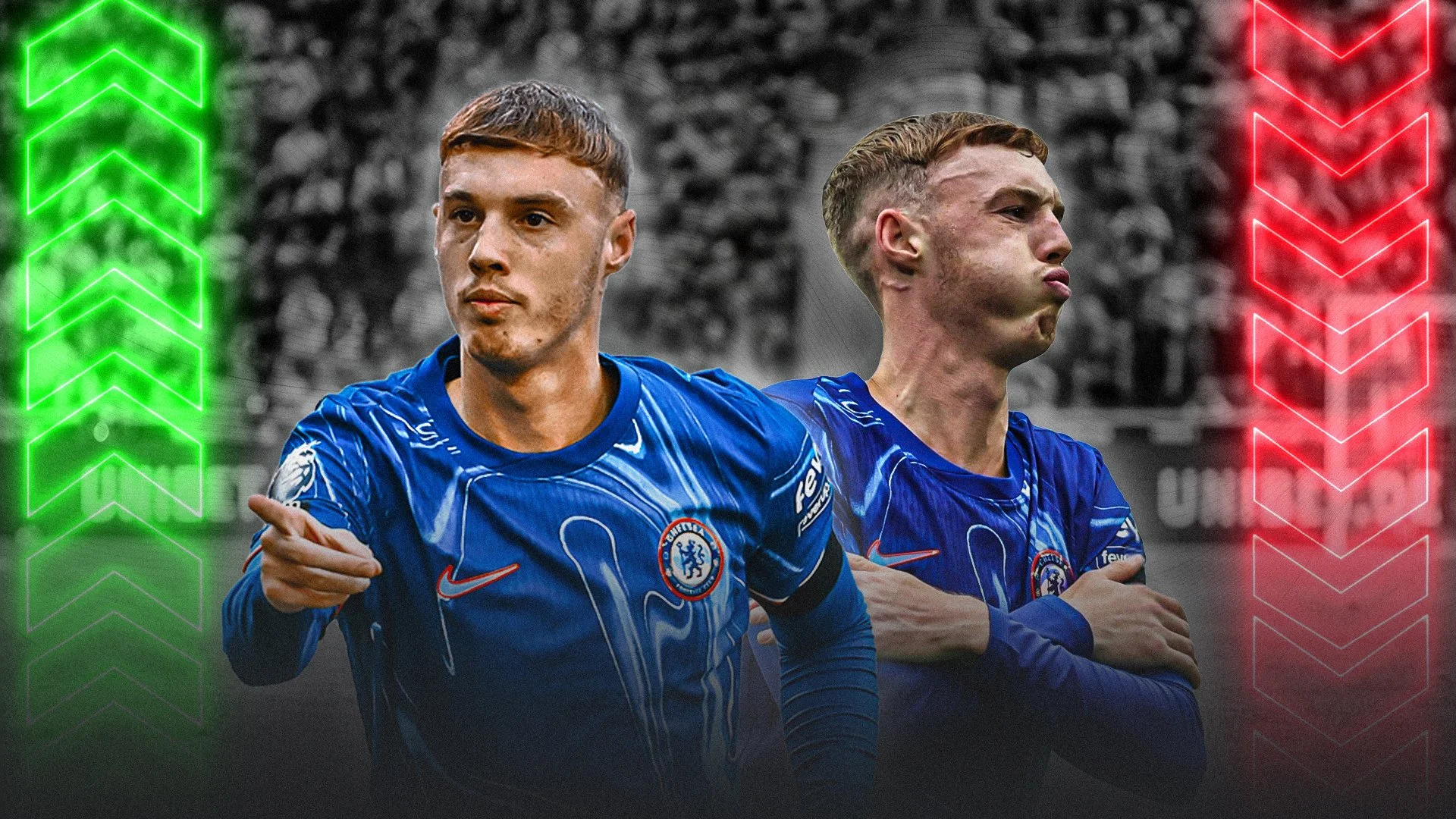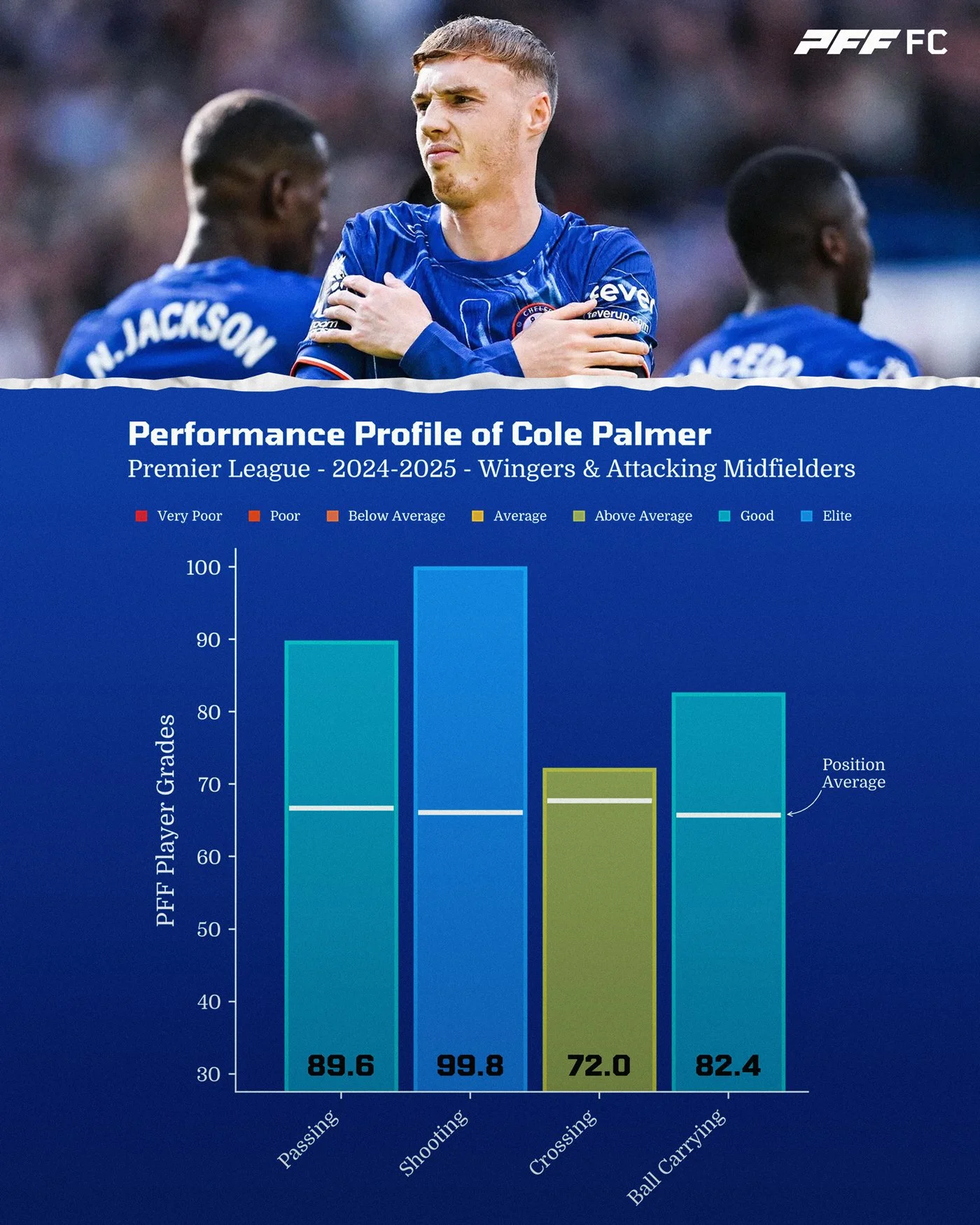Cole Palmer's Performance Against Big Clubs: A Data-Driven Analysis
Cole Palmer has cemented his place as one of the Premier League’s most exciting talents, blending creativity, technical skill, and an innate ability to influence games. Yet a narrative persists: Palmer struggles to perform when facing other members of the Premier League’s top six. But does the data support this perception? Using insights from PFF FC, we’ve delved into his performances.
Before diving in, it’s worth noting the context. This analysis is based on just 11 games, four of which were against top six opposition. While these numbers offer intriguing insights, the small sample size makes it difficult to draw definitive conclusions.
Shooting Performance: Quality of Chances
The data provides some support for the narrative in one area: shooting. Palmer’s average shooting grade is significantly lower against top clubs at the 10% threshold, suggesting that he struggles to convert opportunities into impactful moments against elite opposition.
However, when breaking down his shooting metrics, such as shots on target and pressured shots on target, there’s no clear decline in performance. The explanation might lie not in Palmer’s execution but in the quality of chances he gets. Of the seven negatively graded shots he took against top clubs, four were free kicks (three of which hit the wall, while one was an overly ambitious effort). The remaining three were speculative attempts from distance, taken under heavy defensive pressure.
The takeaway? Palmer’s lower grade may reflect the difficulty of the opportunities he’s presented with rather than a lack of skill. It highlights how tough defensive setups can stifle even the most creative players and reduce their ability to shine.
Cole Palmer’s Attacking Performance Profile
Palmer has some of the best attacking output in the Premier League this season, grading well above his positional average. His 99.8 shooting grade ranks 1st among all players.
Passing Grades and Creativity: A Subtle Shift
Palmer’s passing grade also dips slightly against top six teams, though not enough to be statistically significant (p ≈ 0.12). What’s more interesting is how his role appears to shift in these games. Metrics show a decrease in defensive line-breaking passes and passes over the top, potentially indicating a more cautious approach. This could be tactical, with Palmer prioritising possession and control over risk-taking against stronger opponents.
Yet, while his creative contributions may dip, his defensive work rises. Palmer’s pressures on passes increase significantly against top sides, suggesting he takes on added defensive responsibilities. This change in focus underscores his versatility and ability to adapt to his team’s needs in different scenarios.
Possession and Involvement: A Steady Presence
Despite facing tougher opponents, Palmer’s involvement on the ball remains steady. Metrics such as possession time and touches per possession show no significant drop-off. This consistency reflects Palmer’s composure under pressure and his knack for finding ways to influence the game, even when spaces are tighter and opposition defences are more robust.
Breaking the Narrative
The narrative that Palmer struggles against big clubs has some truth, particularly in his shooting grade. However, the data paints a more nuanced picture. His lower grades often reflect the nature of these games, tougher defences, fewer chances, and higher tactical demands, rather than a drop in his individual quality.
For football fans who enjoy using data to uncover hidden insights, Palmer’s performances offer a fascinating case study. While he may not yet dominate against the biggest clubs, the underlying metrics suggest a player learning, adapting, and laying the groundwork to thrive on the sport’s toughest stages.


